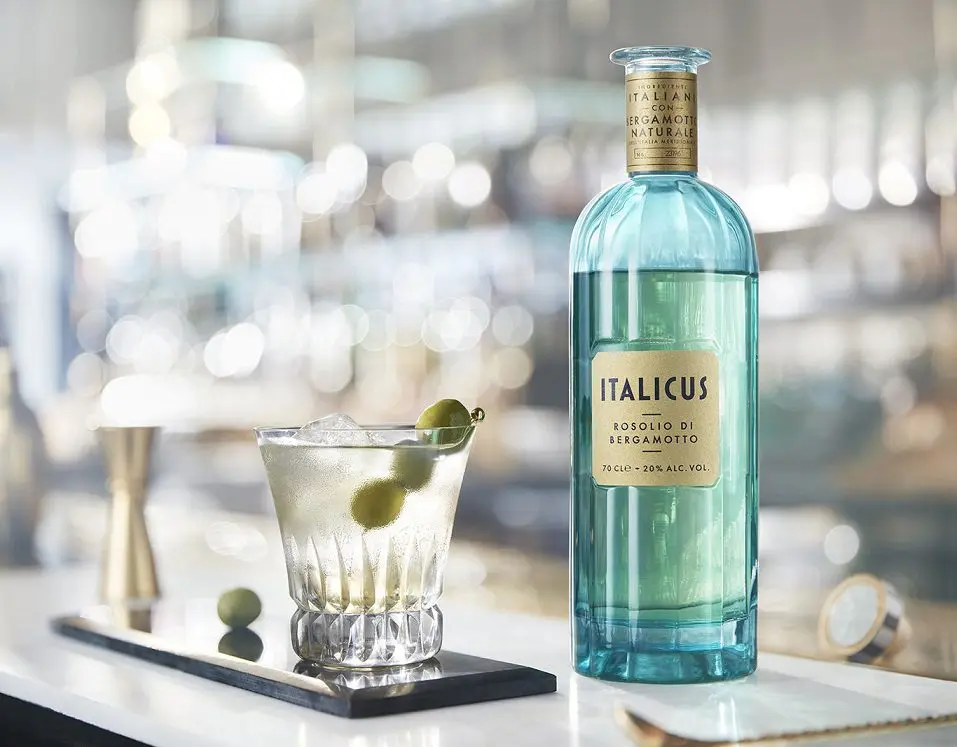Contents
Italicus Rosolio Di Bergamotto (Italicus Rosolio di Bergamoto) is an Italian premium dessert liqueur. Aperitif appeared on the market not so long ago, but has already managed to find fans on both sides of the ocean. Customers appreciate the drink for its interesting taste with hints of citrus, lavender and rose petals, and bartenders create cocktails based on it, which become hits of summer parties.
History of liquor
Italicus liqueur was created by Giuseppe Gallo, a former brand ambassador for Martini & Rossi, an expert in aperitifs, vermouths, amari and negroni. The winemaker was inspired by the recipe for the undeservedly forgotten old liqueur Rosolio, which got its name from the sundew herb (lat. ros solis). The drink is popular in Italy, where it is traditionally prepared at home from alcohol and vegetable raw materials. The composition depends on the region – in Sicily, housewives make tinctures from oranges and fennel, in Calabria they add bergamot, and in Piedmont – rose petals.
Rosolio was first mentioned in documents of the XNUMXth century, and for many centuries the liqueur has been loved by many generations of Italians. Rosolio has become a kind of gastronomic attraction of the country – they drink it at engagements and weddings, give it with a wish of good luck. However, the drink has never been produced on an industrial scale. Small batches were made at the Erboristica winery in Florence and at the Mulassano cafe in Turin, but it was almost impossible to find the liquor on the menus of bars and restaurants.

Giuseppe Gallo decided to rectify the situation. In 2014, he left all his affairs and devoted himself to the creation of a new liquor. The winemaker was based on the recipe for Rosolio di Torino with the addition of bergamot from the book Liquorista Pratico of 1894, but in its classic form the drink did not meet the requirements of Gallo. It took almost a year and a half to refine the composition, taking into account modern trends, and in 2016 the Italicus liqueur was presented to the general public.
The very next year, the novelty won several major awards at international competitions and took first place in the Tales of the Cocktail 2017 competition for the best cocktail ingredients. The judges noted both the original drink and the remarkable design of the bright blue-green bottle. The designers were inspired by the views of the Blue Grotto in Capri, where Giuseppe Gallo spent his summers as a child. The winemaker is proud of his creation and is sure that he managed to complete the task – to embody the spirit and beauty of Italy itself in the drink.
Features of the production of Italicus Rosolio Di Bergamotto
Liqueur “Italicus” is produced at a family distillery located in Moncalieri – a suburb of Turin. Essential oils of bergamot and orange are obtained at the enterprise using the ancient sfumatura technique – the peel is manually separated from the pulp, washed with lime water and dried in baskets for a day. The process helps to extract the maximum essential oil, while lime neutralizes excess acidity.
Other herbal ingredients are macerated in neutral grain alcohol for 8-9 days. Then the fragrant extracts are mixed and the blend is left to rest in large wooden containers.
The composition of the liqueur “Italicus” includes:
- Roman chamomile from the Lazio region;
- Sicilian lemons;
- lavender, yellow rose petals and gentian root, collected in the northern regions of Italy.
At home, Italicus is distributed by Velier. The main importers of the brand are the USA and Great Britain. The drink is also popular in France, Germany, Spain, Scandinavia and Greece.

How to drink Italicus liqueur
The strength of the drink is 20% vol., in its citrus aroma notes of rose and lavender are clearly distinguished. At the start, the taste is dominated by a bright citrus bouquet, which is balanced by noble bitterness and floral tones. The aftertaste is long and multifaceted, with spicy and lemon nuances.
Liquor is traditionally drunk as a digestif (dessert spirit), however, Italicus was created primarily as an element of Long Drinks – aperitifs popular in southern Europe, served before the main meal.
Giuseppe Gallo advises mixing the liquor in equal proportions with Prosecco sparkling wine (you get the Italicus syringe cocktail) and drinking it with ice and olives to balance the sweetness with salty undertones.
Italicus goes well with IPA beer in a ratio of 1:4, such a cocktail is served chilled in a highball glass. Any not too sweet carbonated drink will help balance the floral tones of the liquor: tonic, soda, dry sparkling wine, while the proportions can be any.









